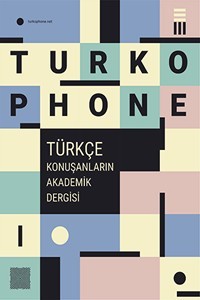Challenges of Teaching Translation of Culture-Bound Terms
Intercultural competence
is really important in language teaching nowadays since it is closely related
to the learners’ need for successful intercultural communication. Translation
is closely related with TL and SL cultures and translation teaching provides
students the solutions to the translation of cultural terms, thus minimizing
translation loss, preserving the cultural element in translation, mediating
between cultures and facilitating intercultural communication. The paper
tackles the issue of intercultural competence and also the techniques of
translating culture-bound terms: transference, componential analysis,
domestication, foreignization, rationalization, expansion, clarification. It
also provides some examples from the translation of literature from English into
Albanian. While making the decision which methods to choose, the best criterion
is considering the readership’s source-culture knowledge. Considering the
nature of the text and the similarities between the ideal ST and TT reader, is
another important aspect is to determine how much missing background
information should be provided by the translator using these methods.
Anahtar Kelimeler:
Intercultural competence, transference, componential analysis, domestication, foreignization
Challenges of Teaching Translation of Culture-Bound Terms
Intercultural competence
is really important in language teaching nowadays since it is closely related
to the learners’ need for successful intercultural communication. Translation
is closely related with TL and SL cultures and translation teaching provides
students the solutions to the translation of cultural terms, thus minimizing
translation loss, preserving the cultural element in translation, mediating
between cultures and facilitating intercultural communication. The paper
tackles the issue of intercultural competence and also the techniques of
translating culture-bound terms: transference, componential analysis,
domestication, foreignization, rationalization, expansion, clarification. It
also provides some examples from the translation of literature from English into
Albanian. While making the decision which methods to choose, the best criterion
is considering the readership’s source-culture knowledge. Considering the
nature of the text and the similarities between the ideal ST and TT reader, is
another important aspect is to determine how much missing background
information should be provided by the translator using these methods.
Keywords:
Intercultural competence, transference, componential analysis, domestication, foreignization,
___
- Bassnet, S. (2001). Translation Studies. London/New York. Routledge. 3rd edition.
- Bell, R. T. (1991). Translation and Translating. Longman. London and New York.
- Byram, M. and Risager. (1999). K.,Language Teachers, Politics and Cultures. Clevedon. Multilingual Matters.
- Newmark, P. (1988). A Textbook of Translation. London. Prentice Hall.
- Toury, G. (1995). The Nature and Role of Norms in Translation. In Venuti. L.The Translation Studies Reader. London. Routledge.
- Venuti, L. (1995). The Translator's Invisibility. New York. Routledge.
- ISSN: 2148-6808
- Başlangıç: 2014
- Yayıncı: Bekir İNCE
Sayıdaki Diğer Makaleler
Challenges of Teaching Translation of Culture-Bound Terms
Advertising Language Seen on The Morphological Plane
The Intercultural Reflection in Lecturing German as a Foreign Language: Analysis of Textbooks
Arnavutçadaki Turkizmalar İçin Çağdaş Bir Bakış Açısı
Yabancı Öğrencilerin Türkçe Yazma Becerisine Karşı Öz Yeterlik Algıları
Türkçenin Yabancı Dil Olarak Öğretiminde “Muhtasar Sarf Ve Lügat-ı Türki”
Glimpses on Proverbs About Women in English And Albanian Language
Yabancı Dil Olarak Türkçe Öğretiminde “Metin Türü Odaklı Açıklayıcı Metin Yazma Modeli”
